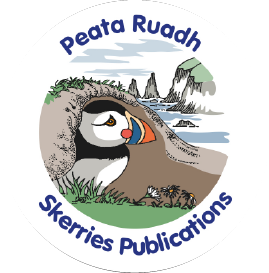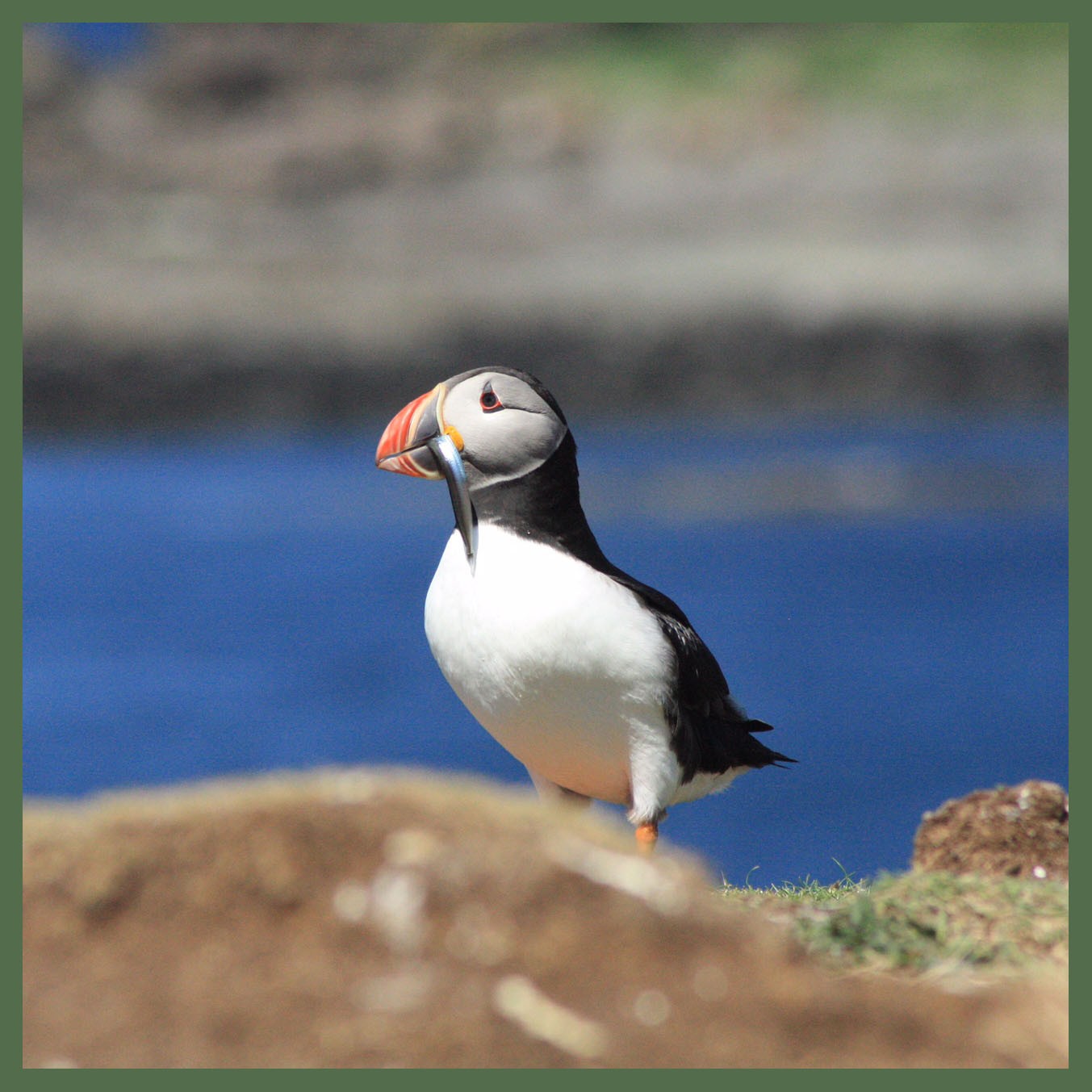Evidence of Hatched Pufflings
Saturday 22nd February 2025
Puffin Detective
Puffins make their nests in burrows underground. So when the puffins go into their burrows to lay their one egg, it is very difficult to see what is happening in their life cycle. Being a detective puffin spotter is really important at this time of year.
Learning how to be respectful to the breeding grounds of puffins can unlock clues and evidence that is exciting and vitally important in monitoring the puffins.
Adult puffins spend most of the year out at sea. Except in the late spring and summer months when they come into land to breed and raise a puffling. When an adult puffin is hungry, successful fishing trips are important. But the adult puffins eat on the move. The adult puffins do not waste energy flying into land to stand and eat their dinner.
Why then are there so many photographs of puffins coming into land with beaks full to overflowing of fish?
Why have the puffins not already eaten this delicious meal?
Being a brilliant detective means that you need to ask lots of questions. Some have very obvious answers, but more importantly these obvious answers can lead onto more questions which can uncover the story behind what is going on for real.
If the fishing puffin is not eating the catch of fish, what is happening to the fish?
Watching the puffins closely, perhaps with a pair of binoculars, or sitting very still and watching from a distance and waiting, and waiting might reveal the answers.
The adult puffin returns from the fishing trip with a beak full of fish to make a delivery into the burrow.
The adult puffin is making this fishy delivery to a newly hatched puffling!
The only evidence of the successful hatching of a puffin egg is to record adult puffins returning to land and the burrow with beaks full of fish.
All the stunning photographs you see of puffins with beaks full of fish coming into land is a celebration of a hatched Puffling!!
Join the celebration of the successful hatching of puffin eggs and the arrival of the PUFFLING!
Try to capture a picture of that puffin returning with a beak full of fish.
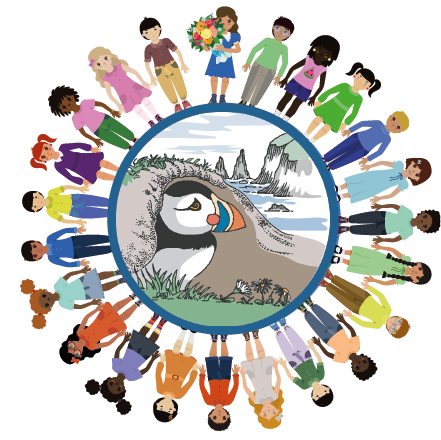
More Peata Ruadh World
Saturday 22nd February 2025
A Rare White Puffin is Sighted
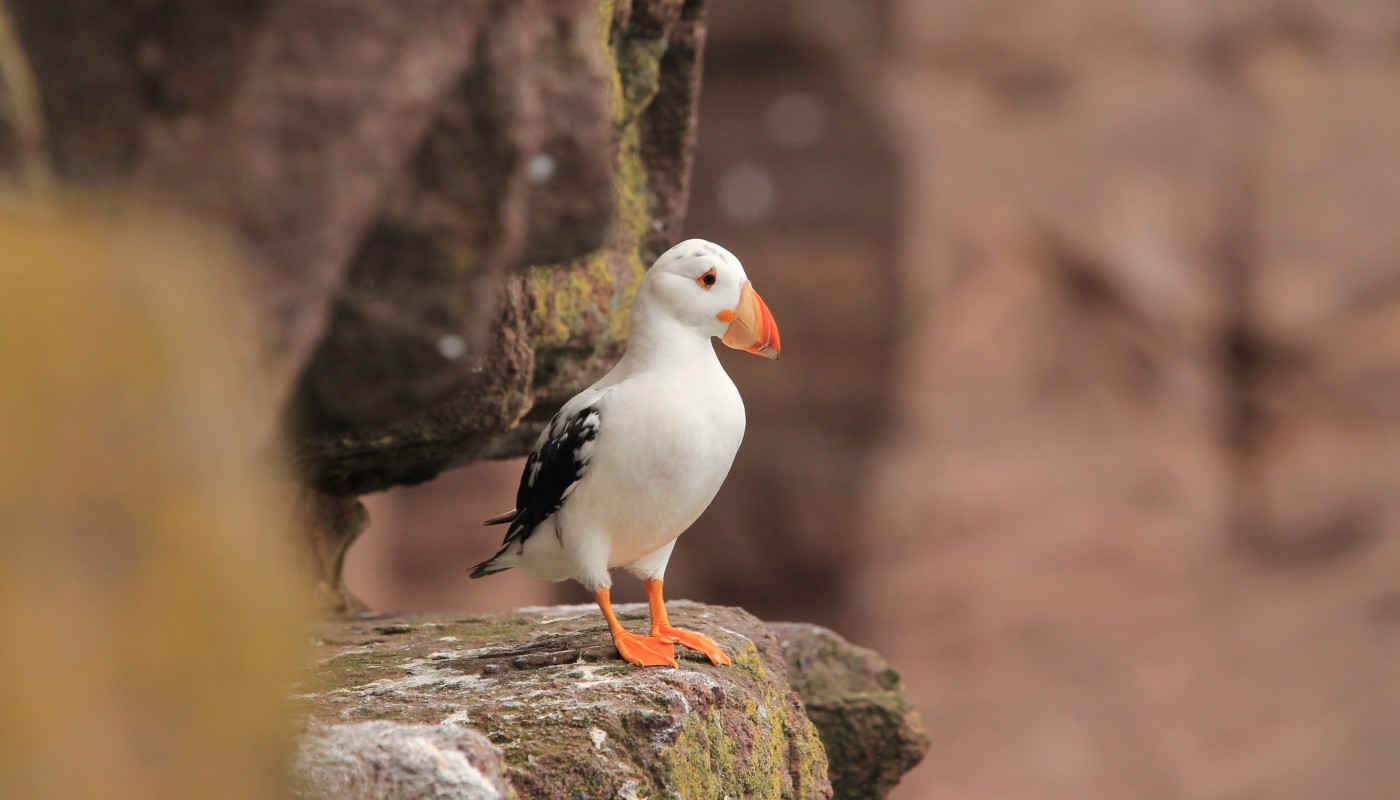 A white puffin with only a few black feathers and a beak that is mostly orange has been spotted on Handa Island Wildlife reserve off the coast of Sutherland in Scotland. Photographs @Dora Hamilton 2021 of Scottish Wildlife Trust.
A white puffin with only a few black feathers and a beak that is mostly orange has been spotted on Handa Island Wildlife reserve off the coast of Sutherland in Scotland. Photographs @Dora Hamilton 2021 of Scottish Wildlife Trust.
Evidence of Hatched Pufflings
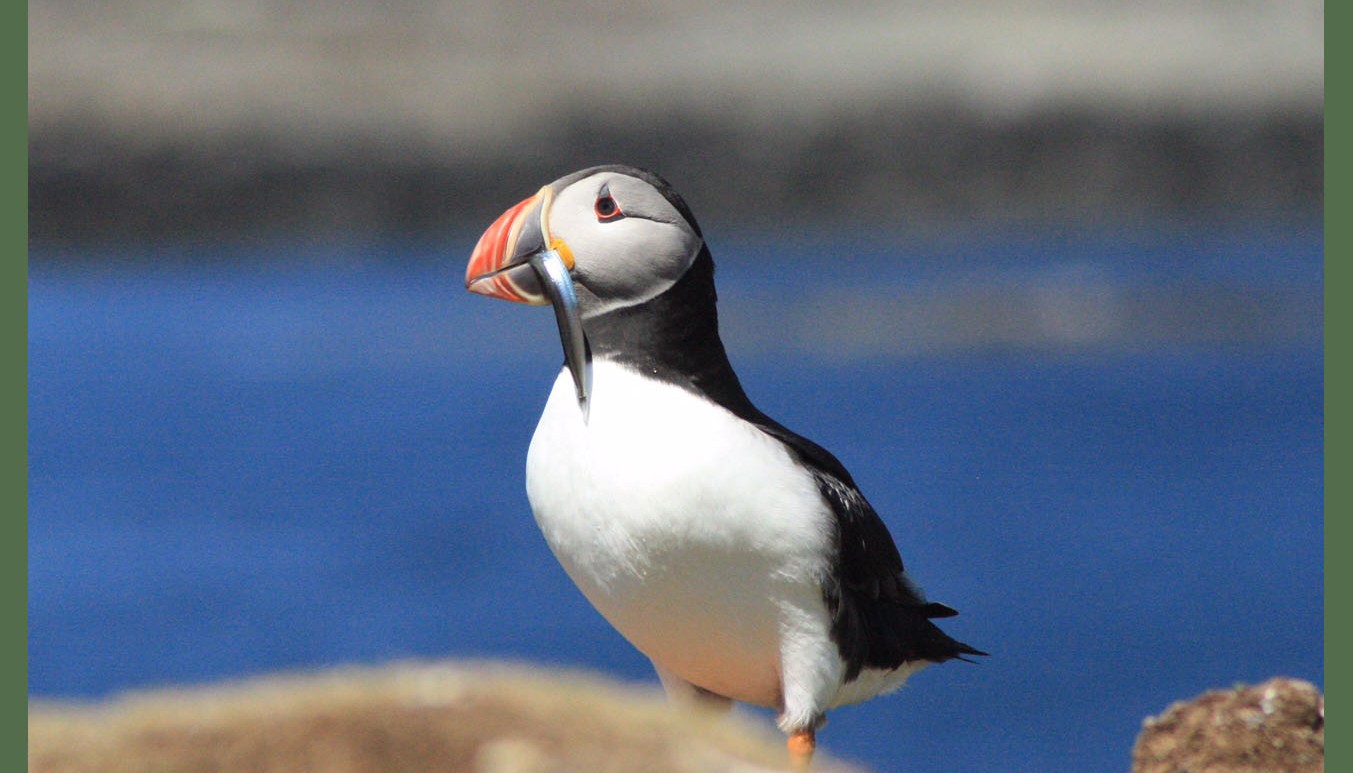 Puffins make their nests in burrows underground. So when the puffins go into their burrows to lay their one egg, it is very difficult to see what is happening in their life cycle. Being a detective puffin spotter is really important at this time of year.
Puffins make their nests in burrows underground. So when the puffins go into their burrows to lay their one egg, it is very difficult to see what is happening in their life cycle. Being a detective puffin spotter is really important at this time of year.
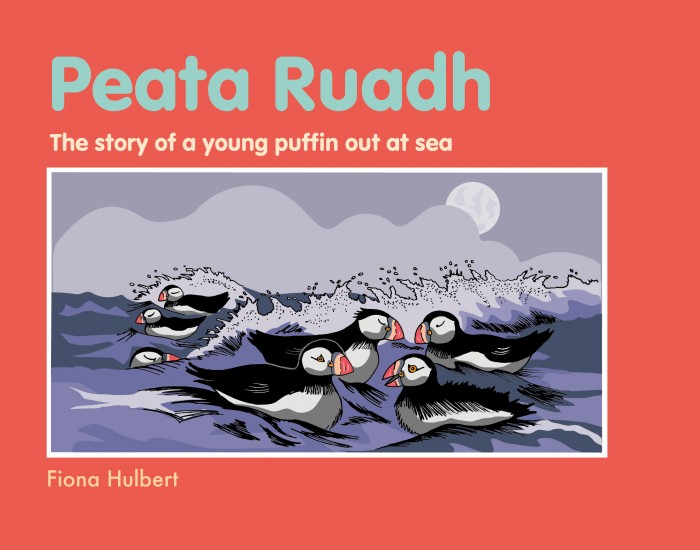 Buy Books
Buy Books Puffin Stickers
Puffin Stickers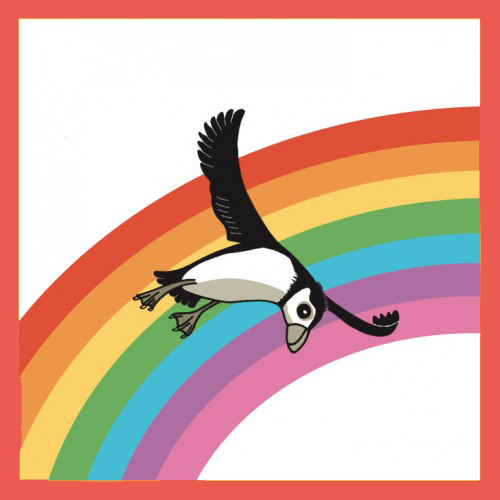 Puffingram
Puffingram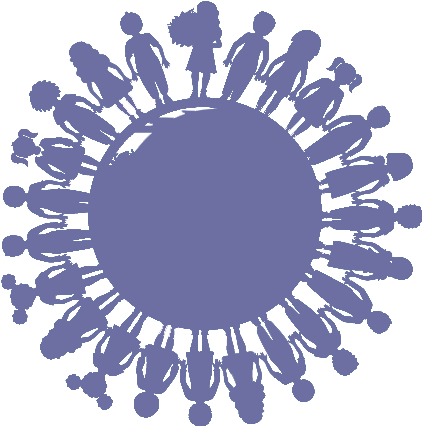 Peata Ruadh World
Peata Ruadh World